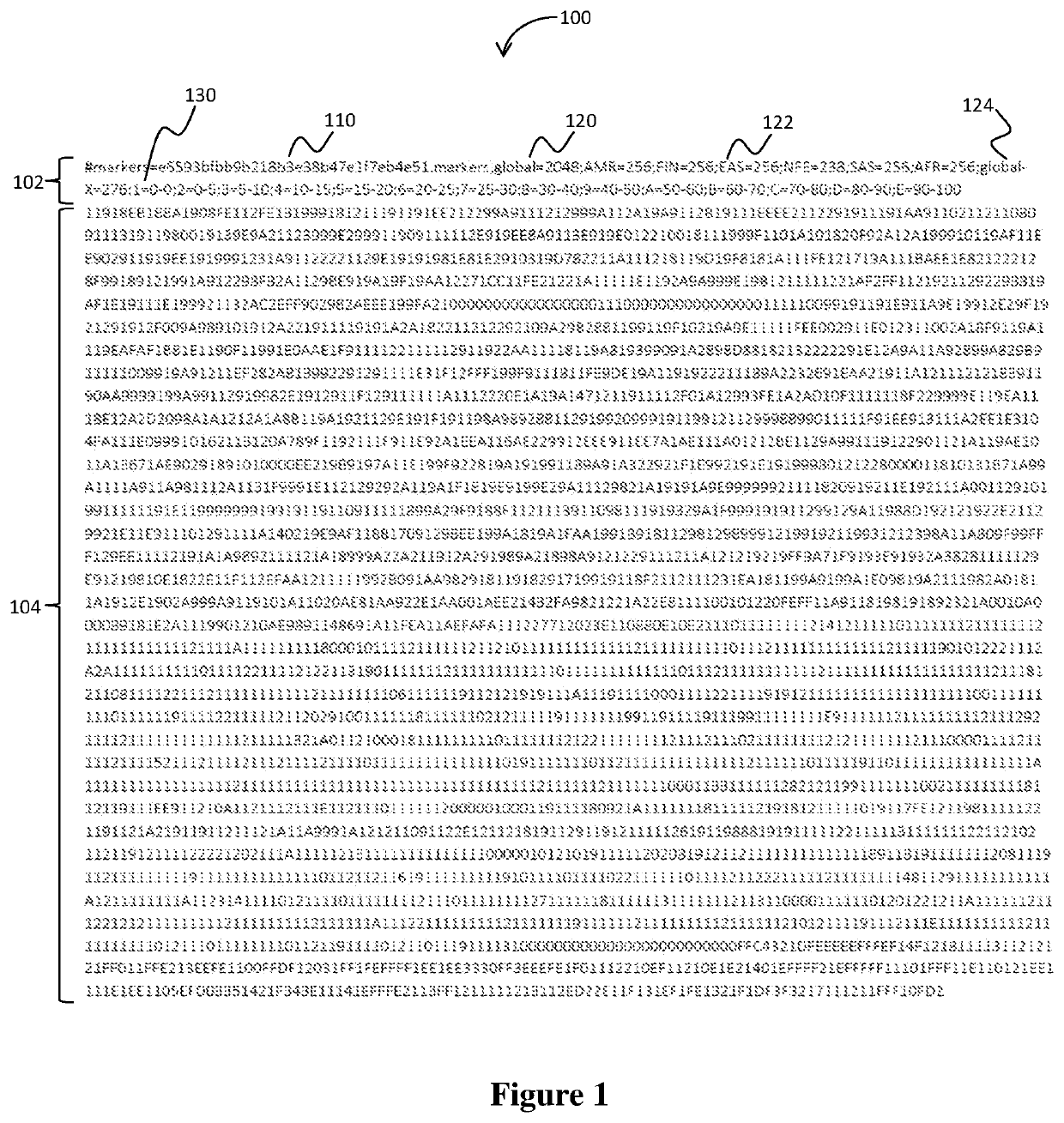Signature-hash for multi-sequence files
a multi-sequence, signature technology, applied in the direction of instruments, biochemistry apparatus and processes, proteomics, etc., can solve the problems of inability to account for allelic variation of snps, and inability to identify relationships for a number of samples, etc., to reduce computational resource demand and increase speed
- Summary
- Abstract
- Description
- Claims
- Application Information
AI Technical Summary
Benefits of technology
Problems solved by technology
Method used
Image
Examples
examples
[0043]A tumor sample (T1) was discovered by an independent assay as mismatching its normal counterpart (N1) from the same patient during tumor-matched normal sequence analysis. There were two other normal samples prepared in parallel with N1 (N2, N3). Using a hash signature as described above (see also FIG. 1), the % similarity, sex, and ethnicity were determined for all 6 pairings, as shown in Table 2 below. % Similarity between a given pair of samples (i, j) was calculated according to the Equation 1 for n loci sequenced by both samples. In this example, all samples were inferred to be European (=NFE (Non-Finnish European)+FIN (Finnish European)) based on the majority of population-specific loci with AF>20% belonging to the NFE or FIN populations in their hash-signatures. Furthermore, all samples were classified as female based on exhibiting fewer than 90% of X-specific loci with heterozygous AF (i.e., 25%<AF<75%) in their hash-signatures. All mismatched samples, including the ori...
PUM
| Property | Measurement | Unit |
|---|---|---|
| allele frequencies | aaaaa | aaaaa |
| frequency | aaaaa | aaaaa |
| time | aaaaa | aaaaa |
Abstract
Description
Claims
Application Information
 Login to View More
Login to View More - R&D
- Intellectual Property
- Life Sciences
- Materials
- Tech Scout
- Unparalleled Data Quality
- Higher Quality Content
- 60% Fewer Hallucinations
Browse by: Latest US Patents, China's latest patents, Technical Efficacy Thesaurus, Application Domain, Technology Topic, Popular Technical Reports.
© 2025 PatSnap. All rights reserved.Legal|Privacy policy|Modern Slavery Act Transparency Statement|Sitemap|About US| Contact US: help@patsnap.com

